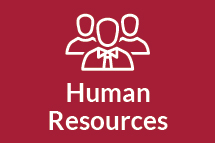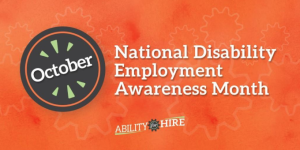October is National Disability Employment Awareness month

 As October is National Disability Employment Awareness month, it is good to be reminded that our campus community is committed to inclusive excellence. We want to make sure that all UIndy employees have the same opportunities to participate in every aspect of work and campus life to the best of their abilities and desires. Here are some helpful reminders regarding how to live and work successfully with people with disabilities.
As October is National Disability Employment Awareness month, it is good to be reminded that our campus community is committed to inclusive excellence. We want to make sure that all UIndy employees have the same opportunities to participate in every aspect of work and campus life to the best of their abilities and desires. Here are some helpful reminders regarding how to live and work successfully with people with disabilities.
- People with disabilities are human. Acknowledge their differences as you would acknowledge anyone else’s uniqueness and treat them “as normal.” Do not talk down to them literally or figuratively. If they use a wheelchair, use a chair to be on their same eye level if you are having a long conversation.
- Put the person first. Say “person with a disability” rather than “disabled person.” Say “people with disabilities” rather than “the disabled.” For specific disabilities, saying “person with Tourette syndrome” or “person who has cerebral palsy” is usually a safe bet. Still, individuals do have their own preferences. If you are not sure what words to use, ask. Avoid outdated terms such as “handicapped” or “crippled.”
- Speak directly to a person with a disability, not to their companion or sign language interpreter. A lack of immediate response does not indicate that the person can’t or won’t respond.
- Adults with disabilities are adults and deserve to be treated and spoken to as adults. Do not make decisions for them. Do not tell them what to do or use baby talk. Provide them with every option you provide those without disabilities. If the option they choose presents a difficulty concerning their disability, discuss ways you could modify or adapt the choice.
- If you are unsure of how you should interact with a person with a disability, just ask him or her. Just because someone has a disability, do not assume they need help. Do not give assistance without asking first if they want it. You can ask if the person would like help, but don’t ask repeatedly or qualify their response with “are you sure?” Respect someone’s choice even if it looks like they’re struggling. If there is a dangerous situation, help just as you would help someone without a disability.
- A person’s mobility equipment, such as a wheelchair, scooter or cane, is part of his or her personal space. Do not touch or move it without permission, even if someone puts it down or chooses to leave it somewhere. Leaning on someone’s wheelchair is like leaning on his or her shoulder. Putting something in someone’s carry basket is like putting something in his or her backpack. It is vital that the owner knows where his or her equipment is at all times.
- Listen attentively when you are talking with a person who has difficulty speaking. Be patient and wait for the person to finish, rather than correcting or speaking for the person. If necessary, ask short or close-ended questions that require short answers, a nod or shake of the head. Never pretend to understand if you are having difficulty doing so. Instead, repeat what you have understood and allow the person to respond. The response will clue you in and guide your understanding.
- People who have psychiatric disabilities may have varying personalities and different ways of coping with their disability. Some may have trouble picking up on social cues; others may be supersensitive. One person may be very high energy, while someone else may appear sluggish. Treat each person as an individual. Ask what will make him or her most comfortable and respect his or her needs to the maximum extent possible.
- There are visible disabilities as well as invisible disabilities, meaning not all disabilities are apparent. A person may make a request or act in a way that seems strange to you. That request or behavior may be disability-related. For example, you may give seemingly simple verbal directions to someone, but the person asks you to write the information down. He or she may have a learning disability that makes written communication easier. Even though these disabilities are hidden, they are real.
- Please note it is considered offensive to pretend to have a disability, and disability simulation experiences should be done for design/navigational purposes only.
